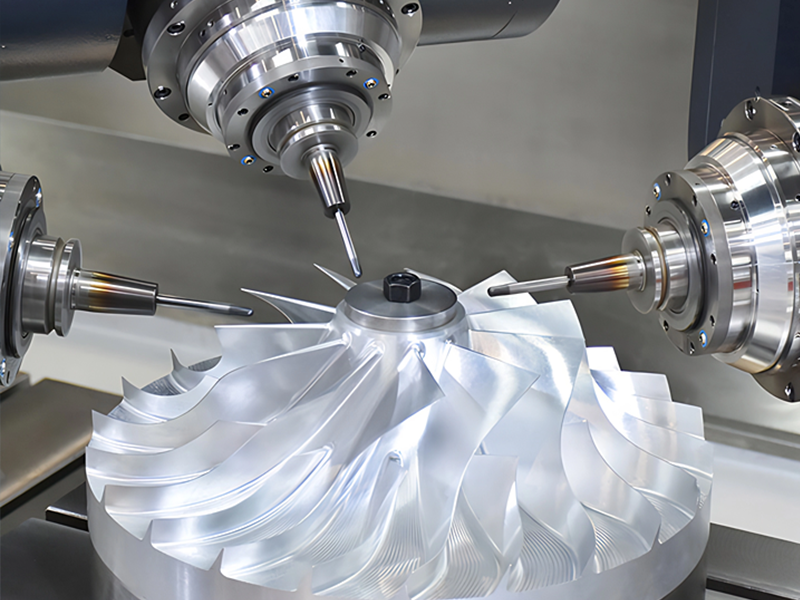Five-axis
CNC machining represents a transformative leap in manufacturing,
enabling the production of highly complex, precision components in a
single setup. By allowing simultaneous movement along five axes (X, Y,
Z, and rotational A/B or C), this technology eliminates multiple
fixturing steps, reduces errors, and unlocks new design
possibilities—particularly in aerospace, medical, and automotive
industries.

1. How Five-Axis Machining Works
Unlike traditional 3-axis machines, five-axis CNC systems incorporate two additional rotary axes:
A-axis (rotates around X)
B-axis (rotates around Y)
C-axis (rotates around Z)
Key Advantages:
Single-Setup Machining: Complex geometries (e.g., turbine blades, impellers) are completed without repositioning.
Improved Tool Access: Angled toolpaths reach deep cavities and undercuts.
Superior Surface Finish: Continuous cutting reduces stair-stepping artifacts.
2. Industry-Specific Breakthroughs
Aerospace & Defense
Medical Implants
Automotive Performance
3. Technological Enablers
RTCP (Rotational Tool Center Point): Automatically adjusts tool positioning during rotation.
Collision Avoidance Software: Prevents crashes in multi-axis movements.
Additive Hybrid Systems: Combining 5-axis milling with DED (Directed Energy Deposition) for hybrid parts.
4. Economic & Operational Benefits
| Metric | 3-Axis Machining | 5-Axis Machining | Improvement |
|---|
| Setup Time | 4–6 hours | <1 hour | 80% faster |
| Surface Roughness | Ra 1.6 μm | Ra 0.4 μm | 4x smoother |
| Material Waste | 30% | 10% | 67% less |
5. Challenges & Solutions
High Capital Cost: Justified by ROI in high-margin industries (e.g., aerospace).
Skilled Labor Shortage: CAM software with AI-assisted toolpath generation lowers expertise barriers.
Vibration Control: Active damping systems maintain precision at high speeds.
6. Future Frontiers
AI-Optimized Toolpaths: Machine learning predicts optimal cutting strategies.
Nanometer Precision: Sub-micron 5-axis systems for optical and semiconductor applications.
Digital Twins: Virtual machining simulations to pre-validate complex jobs.
Conclusion
Five-axis
machining is redefining manufacturing agility and capability. As
industries demand lighter, stronger, and more integrated components, its
role will expand—driven by smarter software, advanced materials, and
sustainable production goals.
- Share
-
12
- Precision CNC Machining for Medical Device Components: Meeting Stringent Requirements
- Five-Axis CNC Machining Centers: Revolutionizing Complex Surface Manufacturing for Precision Industry Upgrades